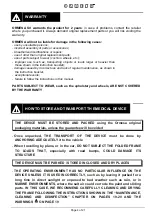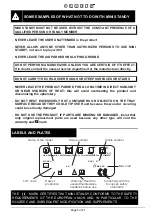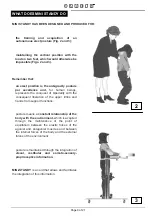
Page 13 of 21
After which the phase of checking the
positioning of the feet within the heel stops
and the knees will begin, following any
existing flexion and always seeking the
maximum active collaboration of the child
who is first informed of what operations are
being performed and, then, why they are being
done
; then, it will be the turn of the pelvis, which
is controlled through the pelvic support, and the
trunk, which is controlled through the pectoral
support
(Fig. 11-12).
Be very careful to apply adequate force to the
pectoral and pelvic supports; in fact, it must be
sufficient to ensure a minimum of stability.
Avoid excessive support, which could cause an
oppressive sense of
“constriction”
and, at the
same time, too
“light”
a support, which could
cause
“fear of falling”
reactions or a sense of
instability
(Fig. 13).
If the child is able to communicate, it is important
to listen to his/her sensations and impressions in
order to “modulate” containment in the best
possible way.
It should always be kept in mind that MINI
STANDY is a stander that allows the child to
do things and must not be used to keep
him/her still and motionless. And this is the
principle that guides the use of this aid, which
must be a tool “for doing things in a correct,
facilitating position”.
It is obvious that correct posture will vary from
child to child, depending on their age, motor
capacity and overall condition.
However, as a general rule, one should impose a
position that is as correct and aligned as possible.
11
12
13
Summary of Contents for MINI STANDY
Page 2: ......










































